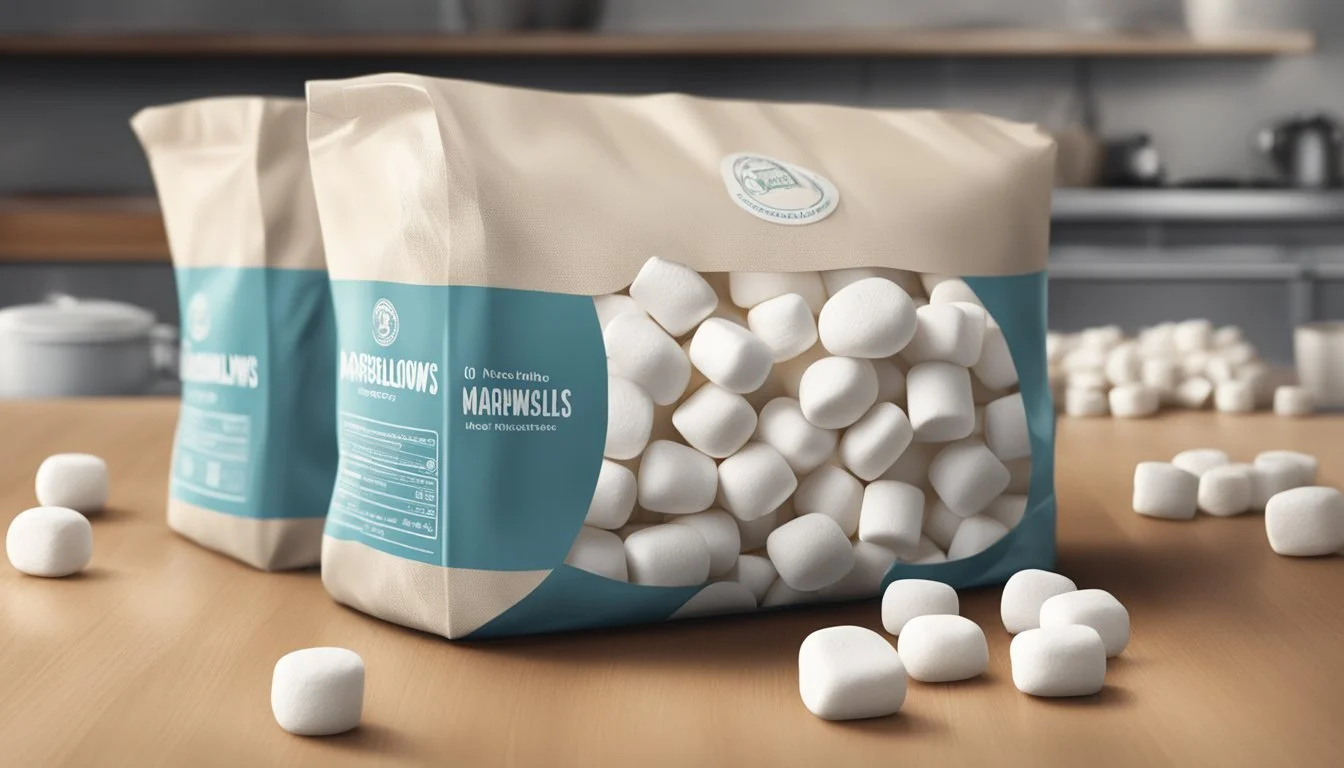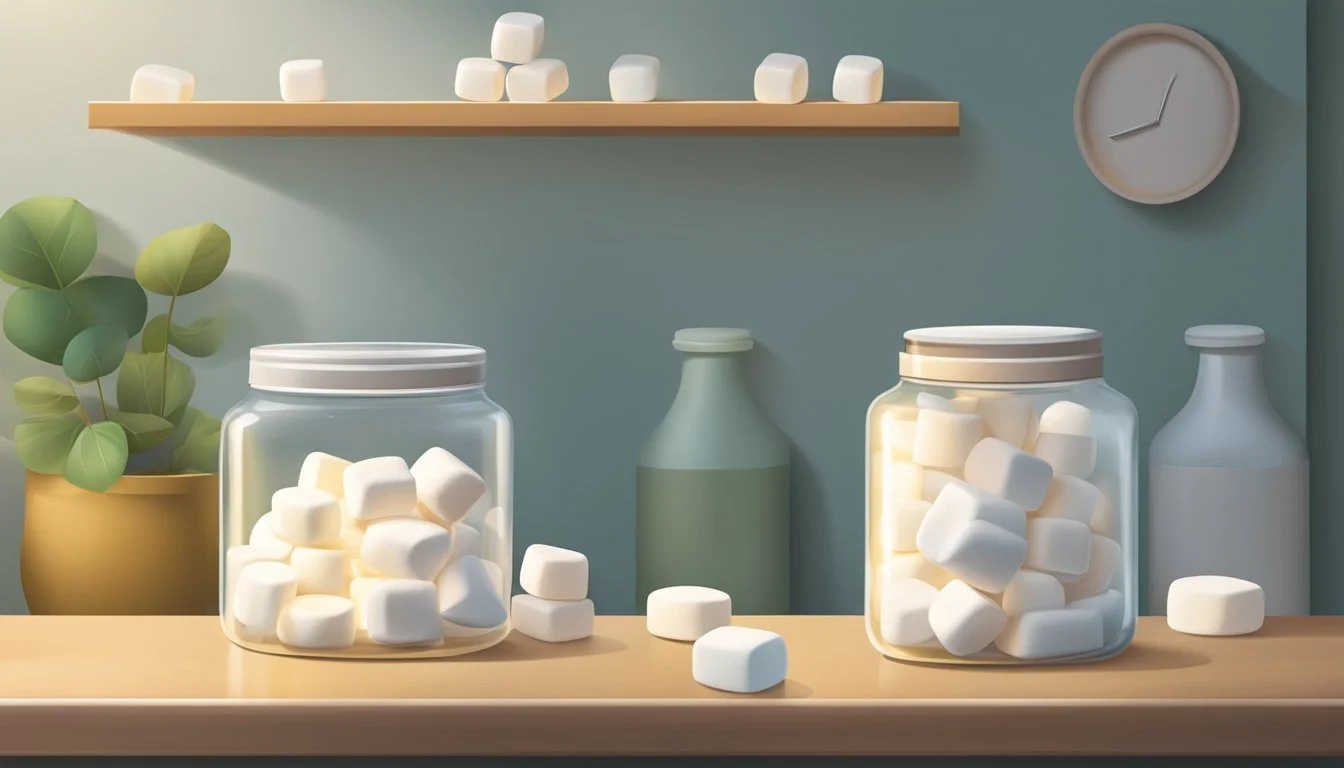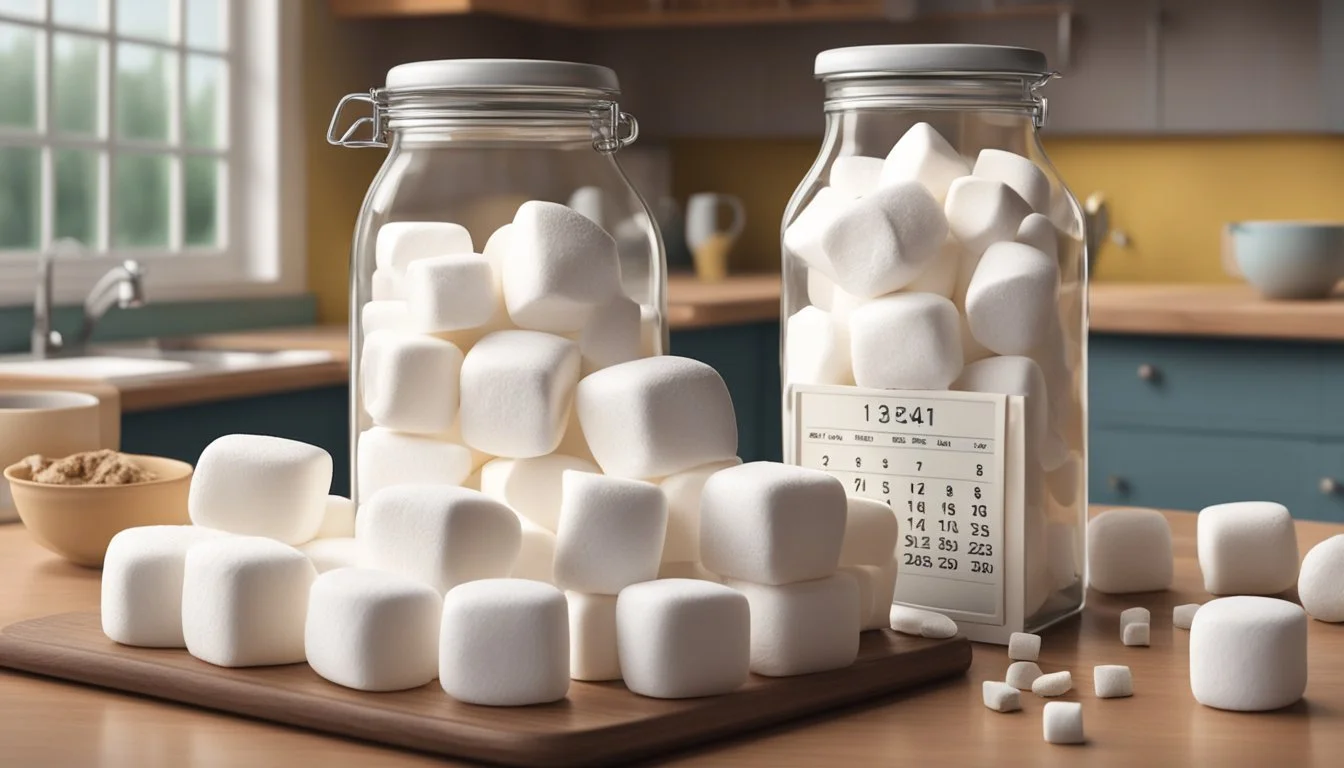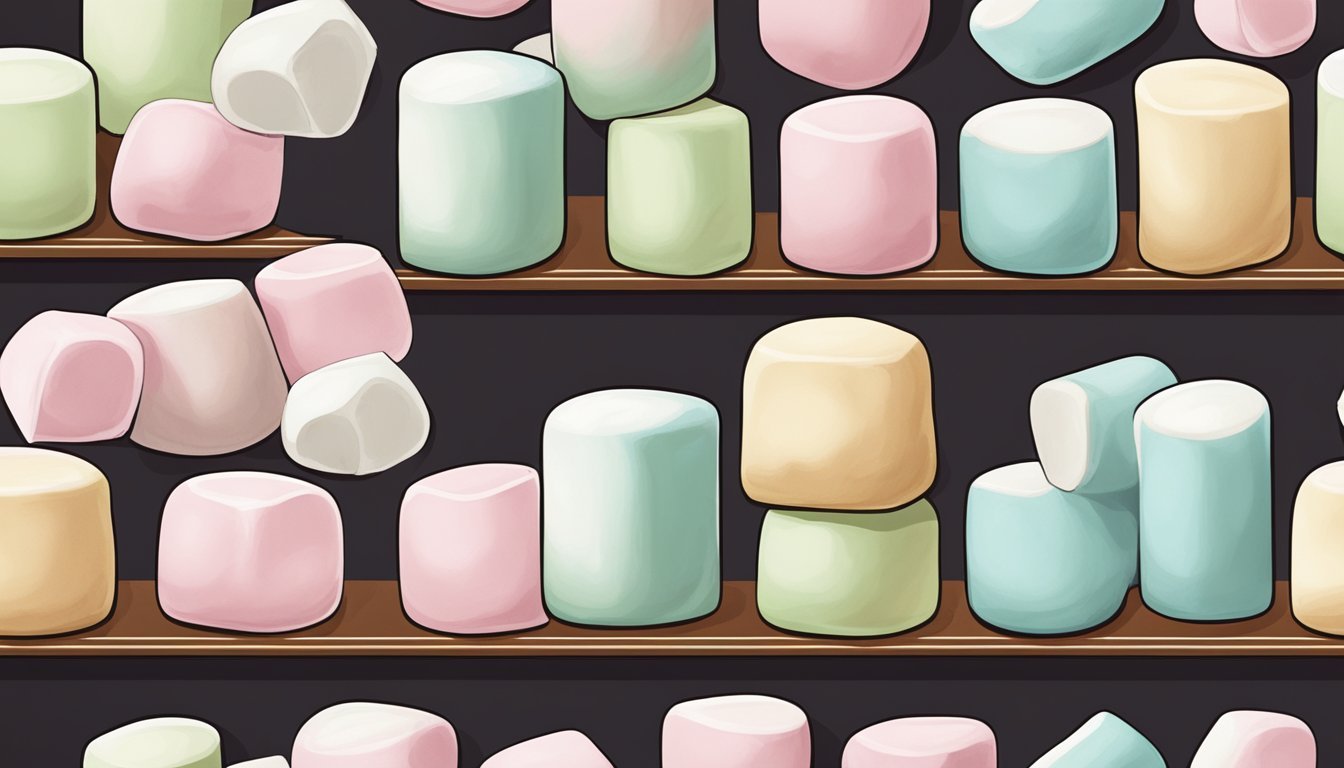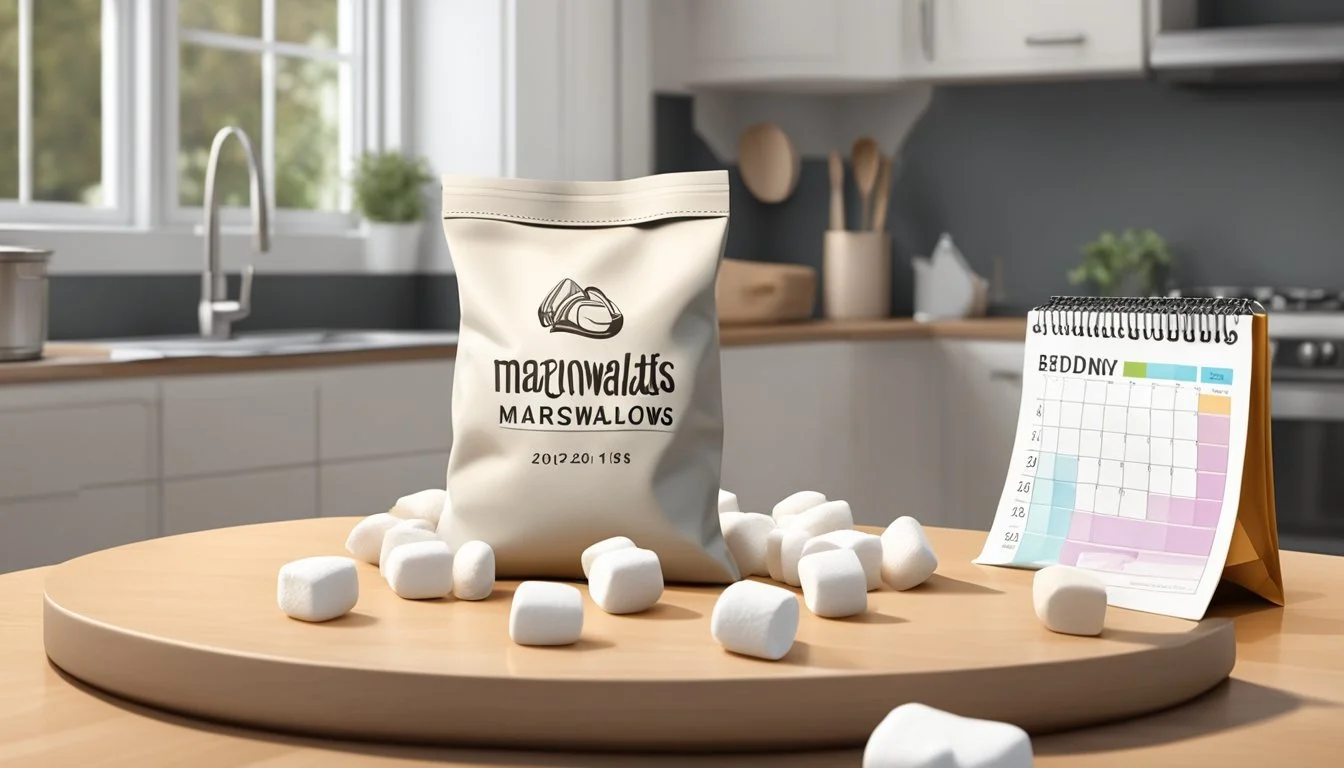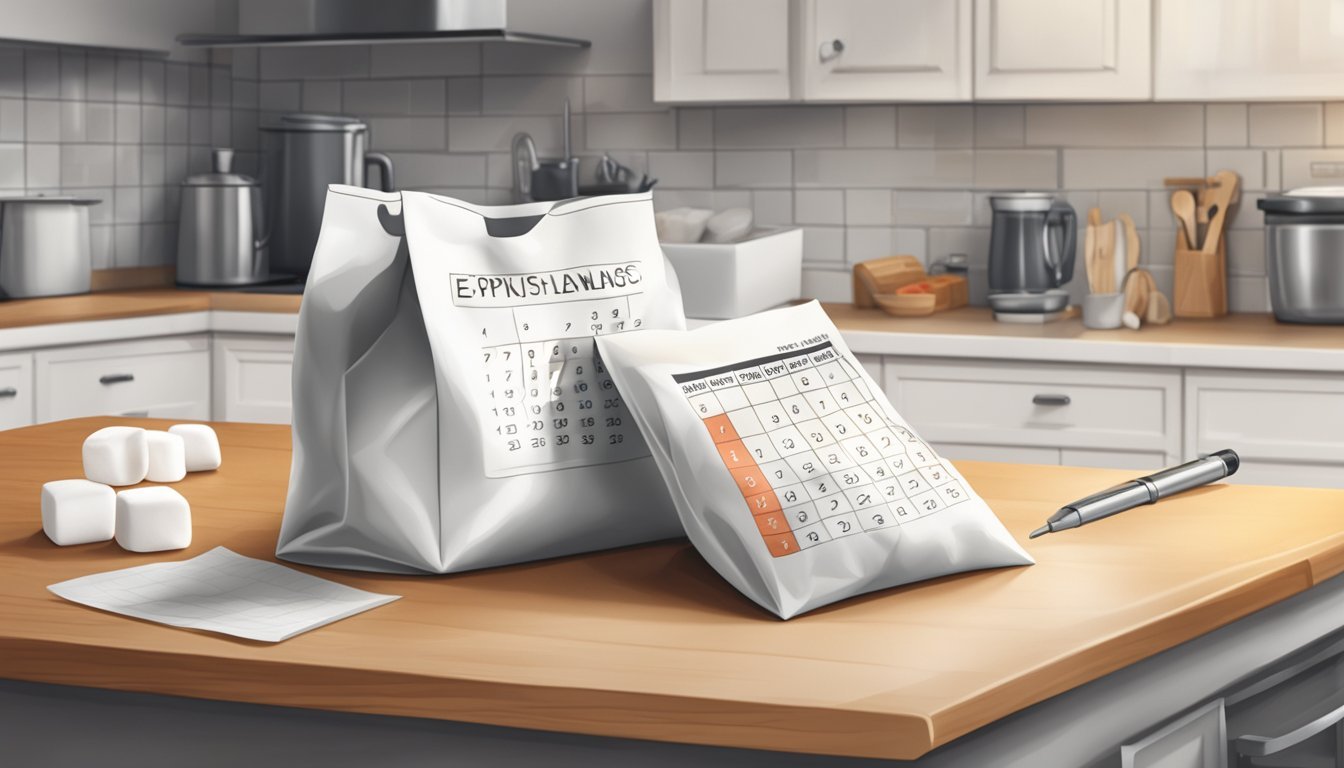How Long Do Marshmallows Last?
Unveiling Their Shelf Life and Storage Tips
Marshmallows, those soft, fluffy confections enjoyed around campfires and in hot beverages, have a surprising shelf life. Unopened marshmallows typically remain fresh and edible well past their best by date, retaining quality for 2 to 6 months depending on storage conditions and the presence of preservatives. Once opened, however, marshmallows begin to lose their freshness and are generally best consumed within 2 weeks to ensure optimal taste and texture.
Understanding how to store marshmallows can extend their usable life. Keeping them in a cool, dry place and sealing them properly after opening are key factors in preserving their quality. Marshmallows tend to become stickier as they age, which can be a telltale sign that they are past their prime. Despite this change in consistency, marshmallows can remain safe to eat for 6 to 8 months beyond their marked best before date, though their optimal quality may have diminished.
Understanding Marshmallows
Marshmallows are confections that are light, fluffy, and known for their versatility in various recipes. This section explores the foundational makeup of marshmallows and their culinary applications.
Composition and Properties
Marshmallows consist primarily of sugar, water, and gelatin, which together create their unmistakable texture. The gelatin, a protein derived from collagen, is what allows the marshmallows to hold their form after they expand during the whipping process. Often, corn syrup (how long does corn syrup last?) is included in the mixture to prevent crystallization of the sugar and to enhance the marshmallow's ability to maintain its structure.
Main Ingredients:
Sugar
Water
Gelatin
Corn syrup (commonly used)
The properties of marshmallows are such that they are soft, spongy, and easily melt when exposed to heat. They come in various sizes, commonly in both mini and regular sizes.
Common Uses
Marshmallows are used in a wide array of recipes and culinary applications. They can be melted down into a sticky substance for dessert toppings, incorporated into confections, or even toasted to a golden brown for a classic treat known as s'mores, where marshmallows are sandwiched between chocolate and graham crackers.
Popular Applications:
Toppings for hot beverages and desserts
Integral ingredient in sweet potato casserole
Key component in s'mores
Included in various candy recipes
The inherent sweetness and adaptability of marshmallows have made them a popular choice in both baking and candy making. They're also enjoyed on their own, especially by children, for their soft, chewy texture.
Shelf Life of Marshmallows
When considering the shelf life of marshmallows, one must distinguish between unopened and opened packages, as well as understand the implications of the expiration date and the best before date.
Unopened vs Opened
Unopened packages of marshmallows can last from 6 to 8 months when stored at room temperature. The key to longevity is keeping them in a cool, dry place away from direct sunlight. Once the package is opened, marshmallows should ideally be consumed within 2 to 3 months. Exposure to air and moisture can accelerate the staling process, causing them to become sticky and lose their freshness.
Expiration Date vs Best Before Date
For marshmallows, the best before date is more common than an actual expiration date, indicating when they are expected to be at their peak quality. While they can remain safe to consume past the best before date, their texture may deteriorate. They are known to last 6-8 months past this date if the package remains unopened, but this time frame is reduced once they are exposed to air. It’s important to note that marshmallows do not generally have a specified expiration date as they don't spoil in the same way as perishable goods but they do lose quality over time.
Optimal Storage Methods
To maintain the freshness of marshmallows, proper storage is paramount. Utilizing the correct methods can significantly extend their shelf life.
General Guidelines
Storage location: Marshmallows should be kept in a cool, dry, and dark place. A pantry is typically an ideal location.
Container type: An airtight container is essential to prevent moisture and air exposure, which can lead to marshmallows becoming stale or sticky.
Refrigeration and Freezing
Refrigeration: It's usually unnecessary to refrigerate marshmallows, as a cool pantry will suffice.
Freezer compatibility: For long-term storage, marshmallows are freezer-safe. Use a tightly sealed bag or container to prevent freezer burn.
Freezing Marshmallows
Preparation for freezing: Place marshmallows in a freezer-safe airtight container or bag. Duration: In the freezer, marshmallows can last up to a year if stored properly to prevent ice crystal formation and flavor loss.
Factors Affecting Marshmallow Freshness
Marshmallows are susceptible to various environmental factors that can significantly affect their freshness and texture. Understanding these influences can help maintain their quality for as long as possible.
Temperature Influences
The temperature at which marshmallows are stored is crucial to their longevity. Storing marshmallows in a cool and dry place, typically at room temperature, generally ensures a longer shelf life. They can remain fresh for approximately 6 to 8 months in their original, unopened packaging under these conditions. Conversely, a hot climate or significant temperature fluctuations can reduce this time frame, leading to early spoilage or a loss of optimal texture and flavor.
Moisture and Humidity
Moisture and humidity are marshmallows' adversaries, causing them to become sticky and lose their structure. Once the packaging is opened, exposure to a humid environment accelerates staleness. To combat this, marshmallows should be stored in an airtight container post-opening to keep moisture out. High humidity levels in the surrounding environment can also cause marshmallows to absorb moisture, resulting in a gooey and unpleasant texture. This is particularly true in humid climates, where without proper storage, the freshness of marshmallows is compromised much faster.
Identifying Spoilage
To assess whether marshmallows have spoiled, one can inspect them for any visual and textural changes or evaluate them for any off odors or tastes, which are clear indicators of spoilage.
Visual and Textural Changes
Marshmallows may start to show signs of spoilage through their appearance and texture. If marshmallows have gone bad, they might become discolored, developing a yellowish or brown tinge. One can also check the texture; fresh marshmallows are soft and squishy. If they feel hard, sticky, or have developed a crystallized exterior, they have likely become stale. When marshmallows turn hard and tough, their quality has deteriorated. In some cases, mold may be visible on the surface, which is a clear sign that the marshmallows should not be consumed.
Odor and Taste Assessment
Smelling and tasting are also effective ways to determine if marshmallows have spoiled. Although marshmallows generally have a very mild scent, any off smell is an indication that they might be bad. Similarly, a taste test should only be conducted if there are no visible signs of spoilage like mold. If there's any off taste or the flavor seems off, it's safer to discard the marshmallows as they've likely gone bad. Bacteria or spoilage may not always be visible, so relying on the other senses is important for a thorough assessment.
Preventing Marshmallow Spoilage
To extend the shelf life of marshmallows, it's crucial to focus on effective sealing methods and protecting them from contaminants.
Airtight Sealing Methods
An airtight seal is imperative to preserve marshmallows' freshness. Consumers can transfer marshmallows to an airtight container, ensuring that the seal is secure and that no air can enter. Alternatively, resealing the original packaging using a rubber band or twist tie may provide an adequate temporary solution. However, for long-term storage, dedicated airtight containers are more reliable.
Zip-top plastic bags: Squeeze out excess air before sealing.
Vacuum-sealed containers: Ideal for preventing staleness.
Protection from Contaminants
Marshmallows are prone to absorbing odors and moisture, which can lead to spoilage. They should be stored in a cool, dry place away from strong-smelling foods. Using cornstarch or powdered sugar can prevent them from sticking together and acting as a barrier to moisture.
Cool pantry or cupboard: Optimal storage location.
Isolation from strong odors: Essential to prevent flavor tainting.
By following these methods, one can significantly reduce the risk of marshmallow spoilage and maintain their quality for a longer time.
Health and Safety Considerations
When assessing the health and safety aspects of consuming marshmallows after their best before date, individuals should consider a few key points.
Health Risks: Consuming expired food products generally carries certain health risks such as foodborne illnesses. However, marshmallows do not spoil in the same way that perishable items do, because they lack water content and are high in sugar, which act as preservatives. While marshmallows are unlikely to harbor bacteria that cause serious food poisoning, eating marshmallows that have significantly deteriorated in quality may lead to minor digestive discomfort.
Consume With Caution: People should inspect marshmallows that are past their best before date. Marshmallows are safe to consume past this date as long as they have been stored properly and show no signs of spoilage. Signs to look out for include:
Discoloration: A change from their original color.
Odor: Any off smells could indicate spoilage.
Texture: They become hard or extremely sticky over time.
Potential Harm: If marshmallows have been stored in a damp environment, they may develop mold. Consuming moldy marshmallows poses a health risk and they should be discarded.
Benefits: There are no specific health benefits associated with eating marshmallows, as they are mainly a sugary treat. However, in terms of food safety, the sugar content and lack of moisture contribute to a longer shelf life compared to many other foods.
In summary, consumers can generally consume marshmallows past their best before date with minimal health risks if there are no signs of spoilage and the marshmallows have been stored under proper conditions. The key is to use sensory cues — sight, smell, and touch — to determine their quality.
Troubleshooting Common Issues
When dealing with marshmallows, consumers commonly encounter issues such as hardened textures or stickiness that can affect their enjoyment. This section provides solutions to these specific problems.
Remedying Hardened Marshmallows
Marshmallows can harden over time or when exposed to air. To remedy this:
Heating Method: Briefly microwave the marshmallows in a microwave-safe bowl, checking every 5 seconds to prevent melting. This can help restore their chewiness.
Moist Towel Method: Place hardened marshmallows in a sealed container along with a piece of damp paper towel. This can reintroduce moisture and soften the marshmallows after a few hours.
Dealing with Clumping and Stickiness
Clumping occurs when marshmallows are exposed to moisture and begin to stick together. In contrast, marshmallows may become too sticky when melted, especially when paired with chocolate or when they defrost. Here are two tips to handle these issues:
Preventing Clumping: Store marshmallows in a cool, dry environment in an airtight container to avoid clumping. For added protection, they can be lightly dusted with powdered sugar or cornstarch.
Handling Melted Marshmallows: If marshmallows are melted and need to be used in a recipe or as a topping, working quickly is essential. When melting with chocolate, stirring frequently can help maintain a smooth, cohesive mixture. If marshmallows have accidentally melted, placing them in the refrigerator may help them firm up just enough to separate them before use.
Innovative Usage of Older Marshmallows
When marshmallows lose their fluffy texture, they can still play a versatile role. They can be repurposed in creative culinary applications or used in craft and decor, providing an unexpected twist on traditional recipes and usage.
Culinary Creativity
Old marshmallows may not have the ideal texture for snacking, but they are still a valuable treat in various recipes. They can be melted down to serve as a base for homemade marshmallows or to add a sweet touch to candy creations. Here are specific ways to incorporate them:
Hot Cocoa Enhancer: Dissolve older marshmallows into hot cocoa to enrich the flavor and create a creamier texture.
Marshmallow Fondant: Use melted down marshmallows mixed with powdered sugar to create a pliable fondant for decorating cakes and cupcakes.
By incorporating old marshmallows into creative recipes, one can extract full value from this versatile candy.
Craft and Decor Applications
Beyond the kitchen, marshmallows can find a second life in craft projects. Their stickiness can be an asset, acting as an adhesive or structural element. Here are a couple craft ideas:
Marshmallow Sculptures: The tackiness of older marshmallows makes them suitable for constructing three-dimensional figures or for educational activities with children.
Home Decor: Use them to create festive garlands or as cushioning for delicate ornaments when packing holiday decorations.
These adaptive uses not only give purpose to older marshmallows but also engage the imagination in transforming a simple treat into resourceful creations.
Marshmallow Storage FAQs
When it comes to storing marshmallows, understanding the impact of storage conditions can help extend their shelf life. Below are frequently asked questions about marshmallow storage:
What is the typical shelf life of marshmallows?
Marshmallows typically last 2-3 months in the pantry, 6-8 months in the fridge, and up to a year when frozen. However, these durations can vary depending on the brand and storage conditions.
How important are temperature and moisture when storing marshmallows?
Store marshmallows in a cool, dry place, away from heat sources and sunlight to prevent them from melting or becoming sticky. Moisture can lead to mold, so a dry environment is essential.
Should marshmallows be sealed during storage?
Absolutely. Airtight storage is key in preventing marshmallows from absorbing moisture or odors. Seal them in a plastic bag, container, or mason jar.
Does the expiration date on marshmallows matter?
While marshmallows have a best by date, they can often last beyond this period if stored properly. However, it's good practice to check for any signs of spoilage.
What are the signs that marshmallows have expired?
If marshmallows are hard, discolored, or have an off smell, they should be discarded.
How can one properly store marshmallows to maximize shelf life?
They should be kept in a cool, dark, and dry place, sealed to prevent exposure to moisture and bugs.
Is it safe to eat marshmallows that have been exposed to direct sunlight?
Exposure to direct sunlight can cause them to melt or become sticky. While they may be safe to eat, the quality may be compromised.
By adhering to these guidelines, one can ensure that their marshmallows retain their quality and enjoyability for the longest time possible.
Conclusion
Marshmallows have a notable shelf life, which allows consumers to enjoy them over an extended period. Store-bought marshmallows typically remain fresh for 2 to 3 months in the pantry. If refrigerated, their shelf life extends to 6-8 months, and they can last up to a year when frozen. Homemade marshmallows tend to have a shorter lifespan of about one month due to the absence of preservatives.
It's important to recognize that marshmallows do eventually deteriorate. The quality of marshmallows is not just about safety, but also about the enjoyment of their taste and texture. As time progresses, marshmallows may become dry, hard, or sticky, indicating a loss of their desired qualities.
Storage Location Expected Shelf Life Pantry 2-3 months (store-bought) Refrigerator 6-8 months Freezer Up to 1 year --- 1 month (homemade)
When checking if marshmallows have gone bad, look for changes in color, texture, and smell. Proper storage in a cool, dry place, away from heat and moisture, is essential to maintaining their freshness. It is advised to keep them in an airtight container to prevent exposure to air, which can speed up the deterioration process.
In summary, marshmallows offer an extended period of enjoyment when stored properly, with their quality and safety being contingent on their storage conditions and timeframe.

